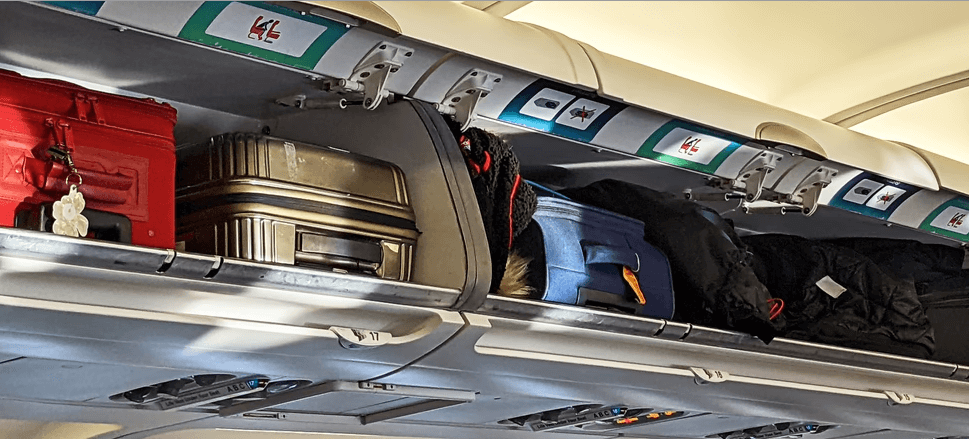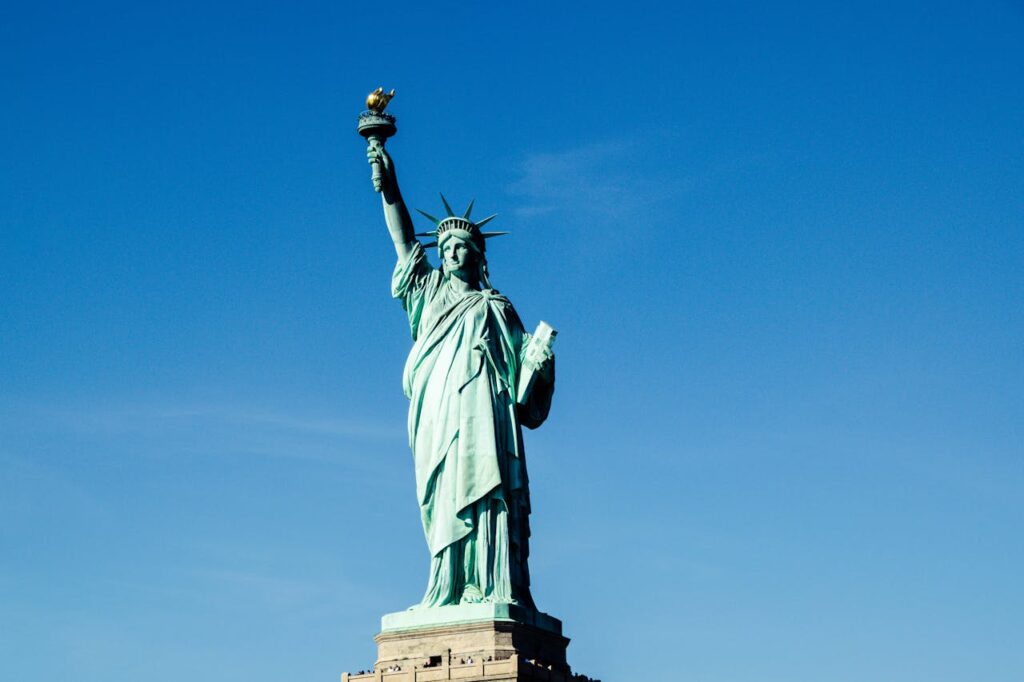The carry on baggage bubble is about to pop has been a traveler’s best friend, offering convenience and saving money by avoiding checked baggage fees. However, this beloved trend may be on the verge of a significant shift. The popularity of carry-on bags surged as travelers sought to streamline their airport experience and sidestep additional costs associated with checked luggage.
But as airline policies evolve, travel behaviors shift, and economic pressures mount, the “carry-on baggage bubble” might be about to burst. This post will explore why this shift could happen and what it means for travelers.
The Rise of Carry-On Culture
Carry-on luggage has become the go-to option for many travelers due to its numerous benefits. With no additional fees, faster boarding processes, and the ease of having all your essentials within arm’s reach, it’s easy to see why carry-on bags are so popular. Travelers appreciate the convenience of bypassing checked baggage lines and the immediate access to their belongings throughout their journey.
A significant driver of this trend has been the introduction and increase of checked baggage fees by airlines. As airlines began charging for checked bags, travelers sought ways to avoid these costs, leading to a surge in carry-on usage. The move to carry-on luggage allowed travelers to save money and minimize hassle, making it a practical choice for both frequent flyers and occasional travelers alike.
Additionally, the minimalist travel movement has played a role in the rise of carry-on culture. Budget-conscious and minimalist travelers have embraced the philosophy of packing light, opting for carry-on luggage to simplify their travel experience. By focusing on essentials and avoiding the need for checked baggage, these travelers align with a more streamlined and cost-effective approach to travel.
Warning Signs: Why The carry on baggage bubble is about to pop?
The carry-on luggage trend, once a symbol of travel convenience, is now facing several challenges that could signal the end of its dominance.
Overhead Bin Space: The New Battleground
The increasing competition for overhead bin space is one of the most pressing issues. As more travelers opt for carry-on bags, the available space in the bins becomes increasingly limited. This has led to longer boarding times and heightened frustration among passengers and airlines alike. The struggle for overhead space can result in delays and inconvenience, as passengers must check their carry-ons at the gate or deal with crowded bins.
Airline Policy Changes
Airlines are starting to respond to these issues by tightening their carry-on policies. Some have introduced stricter size restrictions or additional fees for larger carry-ons, aiming to manage the congestion and streamline boarding processes. These policy changes can make carry-on travel less appealing, as travelers face new hurdles and potential costs that diminish the benefits of packing light.
Traveler Expectations vs. Airline Reality
There is a growing disconnect between travelers’ expectations of hassle-free carry-on convenience and the reality of overbooked flights and crowded planes. While travelers anticipate a smooth experience with their carry-on, they often encounter the frustration of cramped cabins and limited bin space, which can erode the perceived advantages of avoiding checked baggage.
Economic Pressures and Fuel Costs
Economic factors, including rising fuel costs, are also influencing airline policies. As airlines grapple with increased operating expenses, they may re-evaluate their baggage policies to optimize revenue and manage costs more effectively. This could lead to changes that impact carry-on luggage, further challenging the trend.
These warning signs suggest that the carry-on baggage bubble may be nearing its peak, as both practical and policy-related issues begin to take their toll.
The Future of Air Travel: What’s Next After the Carry-On Bubble?
As the carry-on baggage trend faces increasing challenges, the future of air travel may see some notable shifts:
A Shift to Checked Bags?
With tighter carry-on policies and increased fees, more travelers may be compelled to return to checking their bags. Airlines might also introduce incentives for checked luggage, such as reduced fees or perks, to encourage this shift and alleviate overhead bin congestion. This change could make checked baggage a more viable option for many travelers, despite its past inconveniences.
Technology and Innovation
Advancements in baggage handling technology could play a significant role in making checked baggage more appealing. Innovations like automated check-in kiosks, improved baggage tracking systems, and faster baggage processing could streamline the experience and reduce the hassle traditionally associated with checking bags. Such improvements might help offset the inconvenience and encourage travelers to consider checking their luggage again.
The Rise of “Personal Item Only” Travel
In response to stricter carry-on policies, some travelers might adopt an ultra-light packing strategy, focusing on traveling with a personal item. This approach, often involving small bags or backpacks that fit under the seat, allows travelers to avoid additional baggage fees while still minimizing what they carry. This trend could become more prevalent as travelers seek to navigate new baggage rules with minimal impact.
Airlines and New Revenue Streams
As airlines adjust their baggage policies and face changing economic pressures, they may explore alternative revenue streams beyond baggage fees. Potential avenues include premium services, enhanced in-flight experiences, or partnerships with travel-related companies. By diversifying their revenue sources, airlines can reduce their reliance on baggage fees and potentially offer a more balanced approach to travel costs.
Overall, the future of air travel will likely involve a blend of adapting to new baggage policies, leveraging technological advancements, and exploring innovative revenue models.
How Travelers Can Prepare for the Pop?
As the carry-on baggage bubble begins to burst, travelers can take steps to prepare for stricter rules and avoid disruptions. Here’s how to adapt:
Adapting to Stricter Carry-On Rules
To navigate tighter carry-on policies, travelers should pack smarter and be prepared for potential changes. This means:
- Check Airline Policies: Before you travel, review your airline’s current carry-on rules and any recent updates. Policies can vary significantly between airlines, so it’s important to be informed.
- Pack Efficiently: Focus on packing versatile, essential items that fit comfortably within your allowed carry-on dimensions. Use packing cubes or compression bags to maximize space and keep your items organized.
- Be Prepared for Gate Checks: If you’re unsure whether your carry-on will fit, consider arriving early or being prepared for the possibility of checking it at the gate.
Choosing the Right Luggage
Selecting the right carry-on luggage can help you stay within size restrictions and avoid extra fees:
- Compact and Compliant: Choose a carry-on bag that meets your airline’s size and weight limitations. Many airlines offer specific dimensions for carry-ons, so opt for luggage that adheres to these guidelines.
- Durable and Functional: Invest in a high-quality, durable bag with features like expandable compartments or built-in organizers to maximize efficiency and convenience.
Consideration for Frequent Flyers
Frequent travelers can benefit from additional strategies to manage baggage more effectively:
- Join Loyalty Programs: Consider joining airline loyalty programs or credit card rewards programs that offer benefits such as free checked bags or priority boarding. These perks can help offset baggage fees and streamline your travel experience.
- Purchase Baggage-Friendly Tickets: Look for tickets that include checked baggage as part of the fare, especially if you travel frequently. Some airlines offer options that bundle baggage with your ticket, reducing the need for carry-on-only travel.
By planning and making smart choices, travelers can better navigate the evolving landscape of airline baggage policies and continue to enjoy smooth and efficient travel experiences.
FAQs:
Why are airlines limiting carry-on luggage?
Airlines are limiting carry-on luggage to address overcrowded overhead bins, reduce longer boarding times, and manage increased fuel costs. These measures help streamline the boarding process and ensure passenger safety.
Will airlines start charging more for carry-on luggage?
Yes, some airlines have already begun charging extra for larger carry-on items. This trend is likely to continue as overhead bin space becomes more scarce and valuable.
How can I avoid extra fees for carry-on luggage?
To avoid extra fees, pack light and ensure your carry-on meets the airline’s size and weight requirements. Additionally, some airlines offer fare classes or loyalty programs that include carry-on luggage, so consider these options when booking.
What is the best size for a carry-on bag?
The standard size for most carry-on luggage is 22 x 14 x 9 inches. However, it’s crucial to check the specific size requirements of the airline you’re flying with, as these can vary.
Will checking bags become cheaper in the future?
As more travelers opt for carry-on luggage, some airlines may offer incentives for checking bags to alleviate overhead bin congestion. However, whether checking bags will become cheaper will depend on individual airline policies and market conditions.
Conclusion
To recap, we’ve explored the rise of the carry-on trend, noting its popularity due to convenience, cost savings, and the minimalist travel movement. However, we’ve also highlighted the signs that this trend might be ending, including the struggle for overhead bin space, stricter airline policies, and economic pressures. As The carry on baggage bubble is about to pop face potential challenges, both travelers and airlines will need to adapt.
We encourage you to stay informed about changing airline policies, prepare for possible adjustments in your travel routine, and make smart decisions to navigate the evolving baggage landscape effectively. By being proactive and understanding the shifts in air travel, you can continue to enjoy a smooth and hassle-free journey.



